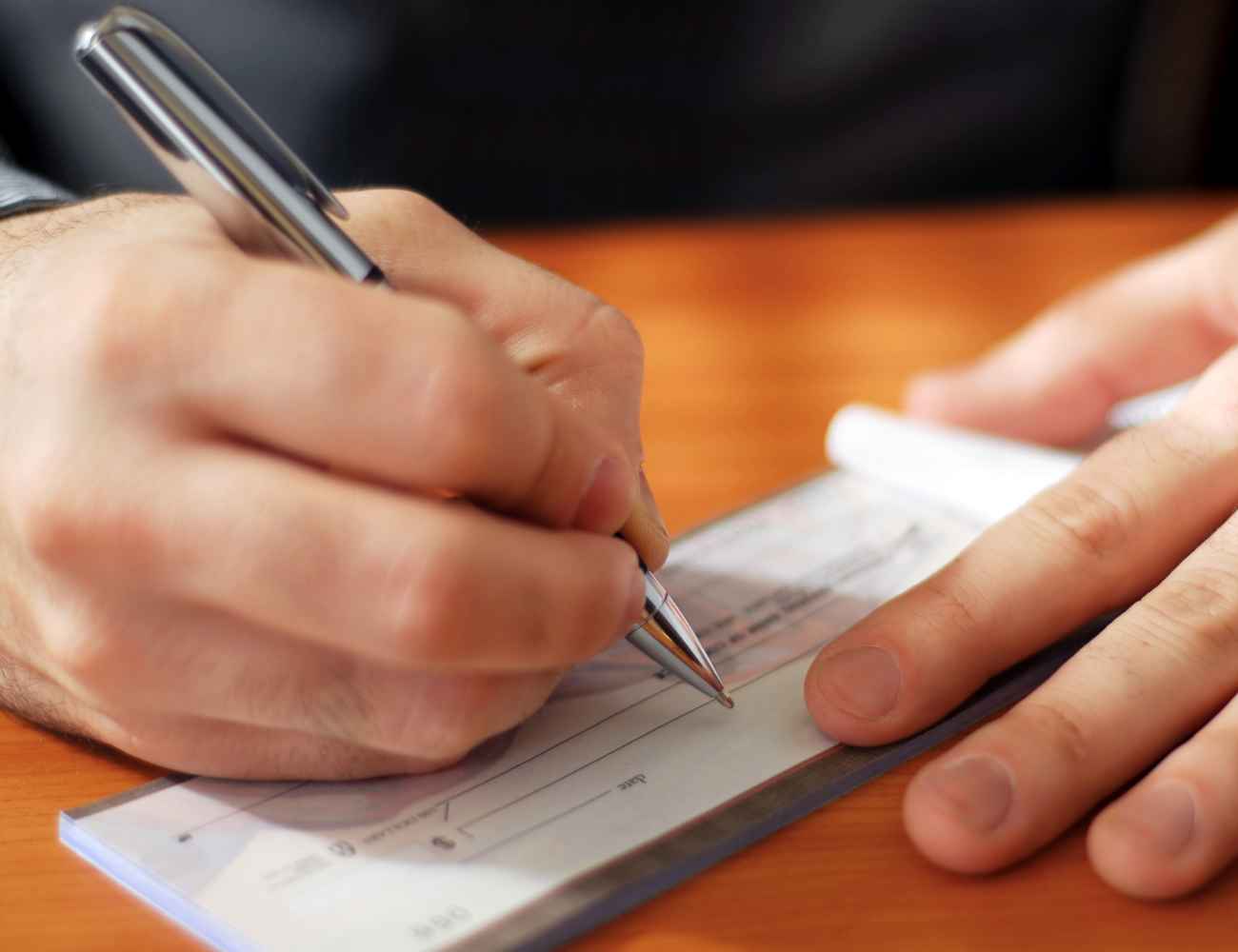Have you ever found yourself in the position of needing to deposit a check for someone else?
With the rise of digital banking and changing regulations, it’s crucial to comprehend what is allowed when depositing a check in another person’s name.
Making deposits for someone else can be a convenient way to help out friends and family.
However, it is essential to understand the potential risks and challenges associated with depositing checks on behalf of another person.
In this article, we will explore the three main ways to deposit a check for someone else and discuss some potential issues that could arise.
We also provide tips on ensuring accuracy and avoiding complications when making third-party deposit transactions.
Table of Contents
- Can you deposit a check for someone else?
- What is a check deposit, and why is it important?
- Exploring the Federal Reserve rules on check deposits for others
- The different ways of making a check deposit for someone else
- How to deposit a check for someone else?
- Potential challenges when making check deposits for another person
Can you deposit a check for someone else?
The short answer is yes. Generally speaking, depositing a check for someone else may be possible if you have their written permission and provide valid identification. However, some banks may require additional information, such as proof of address or a relationship statement. Always check with your bank to confirm their specific requirements.
Yes, depositing a check for someone else in the United States is possible.
According to federal regulations set by the Federal Reserve, you may deposit a check made payable to another person into an account you control as long as you have written authorization from the payee.
For example, if someone has written out a check made payable to your name and you are authorized to do so, you can deposit the check into your account.
However, some essential laws and regulations must be observed when depositing checks for other people.
The rules that govern this process vary depending on the state or region, so it’s important to familiarize yourself with all applicable laws before proceeding with a check deposit on behalf of somebody else.
For instance, in certain states, it may be necessary for both parties involved (the payer and payee) to sign off on the transaction before it can be processed. In other cases, only one signature may suffice.
Additionally, when making a check deposit on behalf of someone else, it’s important to understand the different methods and requirements associated with the various types of checks—such as cashier’s checks, certified checks, and money orders.
Generally speaking, you may need to present additional identification information or documents when depositing these payment instruments into an account other than yours.
In some cases, you may also be required to provide a copy of the payee’s ID and your own.
It is crucial to review all applicable rules before attempting to deposit any check on behalf of somebody else.
Additionally, you should ensure that all the information provided is accurate and up-to-date. Failure to do so could lead to legal repercussions or cause delays in processing payments.
Knowing potential third-party fees associated with deposits made for someone else is important.
Sometimes, banks or other financial institutions may charge additional fees for this service and regular account maintenance costs.
Be sure to ask about such fees before initiating a transaction to avoid surprises later.
Furthermore, it’s also vital to remember that if you make a mistake when depositing a check on behalf of another person—such as entering an incorrect amount or misplacing funds—you could be held liable for any losses incurred as a result of your actions.
Finally, always keep any related documents if issues arise during or after such transactions.
Highly recommend watching this YouTube video:
Here Slava-Money gives us information on the topic of this post.
In summary, it is possible to deposit a check made out to someone else into an account controlled by another person depending on relevant laws and regulations.
Those who wish to undertake such transactions must understand all associated risks to protect themselves financially and legally.
What is a check deposit, and why is it important?

A check deposit is a financial transaction in which someone deposits a check or checks into a bank account.
The funds from the deposit are made available for use as soon as the bank receives and verifies the documents associated with the check, such as the payee’s name and address.
Check deposits are important because they provide an efficient and secure way to transfer money from one person to another, making it possible to quickly access funds without waiting for physical cash or relying on untraceable payment methods like cashier’s checks or money orders.
Check deposits can also be helpful when dealing with large amounts of money since they allow users to track their transactions and ensure that payments have been correctly received by their intended recipient.
Additionally, many banks offer special rewards or bonuses when using check deposits instead of other payment methods.
Check deposits are essential because they make it easy for individuals to manage their finances—including budgeting, tracking spending patterns, and identifying areas where extra savings might be beneficial.
In addition, by keeping up-to-date records of all incoming payments and deposits, it is possible to monitor your financial situation more effectively and better prepare for potential changes in the future.
Exploring the Federal Reserve rules on check deposits for others
According to Federal Reserve Board Regulation CC, banks and other financial institutions must take reasonable steps when depositing checks on behalf of someone else.
In general, FDIC-insured banks must verify the identity of anyone receiving funds or making a check deposit on another person’s behalf.
This means additional documents may be necessary if you are trying to deposit a check on somebody else’s behalf—such as a copy of their photo ID or proof of address.
Additionally, some forms of payment require special handling or identification verification, such as certified checks or money orders.
Most banks also have restrictions on how much can be deposited at one time without providing additional identification information.
Federal Reserve Board Regulation CC suggests that any bank providing check-cashing services should take reasonable steps to prevent fraud and verify the identity of every customer attempting to deposit a check on someone else’s behalf.
These steps typically include the following:
- Verifying the customer’s identity by asking for government-issued photo identification and proof of address, such as a utility bill.
- Request additional information, such as the payee’s name, address, and relevant payment details.
- Requesting both parties sign a document acknowledging the transfer of funds from one party to another.
- Conducting a background check on the customer to confirm their identity and assess any potential risks associated with completing the transaction.
- Monitoring customer transactions for possible fraud or suspicious activity, such as multiple deposits made within a short period of time or deposits made from different locations within a day or two of each other.
- Following up with law enforcement if there is suspicion that fraudulent activities are taking place or if a customer is not providing sufficient identification documents during the verification process
Furthermore, it is crucial for all parties involved in the transaction to understand their respective rights and responsibilities before initiating any check-related activities.
The different ways of making a check deposit for someone else
There are several other methods for making a check deposit on behalf of someone else. These include the following:
Mailing the check directly to the bank or financial institution: In this method, you mail the check directly to the bank or financial institution, where it will be processed and deposited into the other person’s account.

Going to a Bank Branch: This involves going to a local bank branch with both parties present to make the deposit. Again, the customer should bring their government-issued photo identification and proof of address for verification purposes.
Using Mobile Deposit Services: Many banks now offer mobile deposit services that allow customers to take pictures of checks to make deposits remotely from their devices.
Utilizing Transfer Services: Several third-party transfer services allow users to securely transfer funds from one account to another electronically without having to visit a bank branch or mail in a check.

Transferring Funds Online: This method involves transferring funds electronically from one bank account to another through an online banking platform, such as a third-party payment service or a direct transfer between the two accounts.
Using Prepaid Debit Cards: Prepaid debit cards allow customers to deposit funds from their existing accounts onto a reloadable card, which people can then use to make payments and deposits.

Making Cash Deposits: Customers can deposit cash at local bank branches or ATMs (Automated Teller Machines). However, for greater security, customers should always use an ATM with card-reading capabilities to avoid any potential fraud or theft-related issues.
The best method for making a check deposit on behalf of someone else depends on the individual’s needs, preferences, and situation.
Mobile deposit services are generally considered the most convenient and secure way of depositing checks remotely.
Transferring funds online or utilizing third-party transfer services are good options for greater security.
If the person cannot access banking services, making cash deposits at local bank branches or ATMs is an easy and safe option.
How to deposit a check for someone else?
Depositing a check for someone else can be done in three ways: deposit slip method, ‘For Deposit Only’ approach, and signature-only method.
The deposit slip method involves obtaining an official deposit slip from the check’s payee and filling it out with their details.
The deposit slip should include the account name, account number, and other required information to deposit the funds into the correct account.
Then you take the deposit slip and the check to your bank teller, who will process it accordingly.
This is considered one of the most secure options for depositing a check for someone else since all of the necessary information is present on both ends, making it difficult to make mistakes or incorrect deposits.

The ‘For Deposit Only’ method is an alternative when the check payee needs to physically sign the endorsement area due to being out of town or away from a bank.
In this case, you can write “For deposit only” in the endorsement area and deposit it at your bank, as long as you have provided all relevant information (e.g., account name, account number, etc.) on both ends accurately.
This option is slightly less secure since it doesn’t involve personal signatures. However, it is still a reliable option if done correctly.
The signature-only method involves having the check payee sign their name in the endorsement area with no other instructions, such as “For deposit only.”
This Helpful DIY video will provide additional information about this process:
This is considered the least secure option since it is a blank endorsement, meaning anyone handling the check can deposit or cash it as they please.
Therefore, it is not recommended to use this method if you don’t trust the person holding the check enough.
Potential challenges when making check deposits for another person
Making check deposits for someone else can present a variety of challenges.
For example, verifying the accuracy and legitimacy of the check is essential to ensure that the bank will transfer funds safely.
In addition, depending on state laws, it could be considered a third-party transaction and may require additional paperwork or authorization from both parties before you can make the deposit.
Furthermore, if inaccurate information is given when making the deposit, it could result in complications such as returned checks, overdrafts, and other charges.
These potential risks highlight the importance of double-checking all information before completing a third-party deposit transaction.
In addition to accuracy and authentication, another challenge could be ensuring that the depositor’s account is not overdrawn.
This is especially important for people receiving payments from someone else, as too many transactions could cause the account to go negative.
Furthermore, if a deposit takes longer than expected to arrive in the other person’s bank account, this could lead to potential financial complications such as missed rent or utility payments.
Finally, depending on how the payment was sent, a check deposit can take several days to fully process, meaning there may be a delay before funds are available.
Depositing a check for someone else can be tricky, and it’s crucial to ensure you have all the necessary information before attempting to deposit, as well as verifying the accuracy of the check.
In addition, it’s also essential to double-check that your account is not overdrawn when depositing on behalf of another person.
Despite these potential risks, depositing checks for others can be done safely if one takes preventive measures such as obtaining deposit slips from both parties or using “For Deposit Only” methods.
Ultimately, with some planning and caution, you should be able to make successful third-party deposits without any complications arising.




